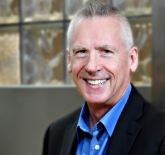So What is All this School Mental Health Stuff About?

The mental health of children and youth has rapidly become a topic of high relevance in practice, policy and research in Canada and internationally. Increasingly, stakeholders are looking to schools as integral parts of the solution to what is clearly a population health issue. But what exactly is and should be the role of schools in the full continuum of mental health and health care? Although the potential roles are varied and depend on context, need and capacity, the following are some areas that have been explored and continue to evolve.
Promoting mental health: As environments, schools should be promoting wellness rather than being sources of stress that exacerbate pre-existing factors that impede student mental health. From safe schools initiatives to providing opportunities for pro-social learning, schools are realizing that they should be environments that promote wellness, limit threats to wellness and teach skills to maintain wellness. This should be continuous across all ages and grades, adding skills to each student’s toolbox over time to be practiced at school and implemented in all aspects of their lives.
Mental health literacy and stigma reduction: A lack of accurate knowledge can contribute to the stigma around mental health/illness and create significant barriers to service access when needed. Young people don’t access mental health services due to 1) stigma, 2) a lack of appreciation that they have a problem that can be helped and 3) a lack of awareness of where and how to get help. This speaks directly to the potential of schools to increase mental health literacy for both students and staff. It also speaks to the increasing importance of system literacy where children, youth and families struggle to navigate supports services that are not very intuitive or accessible to them.
Identification of mental health problems: Mental health challenges are often first identified as changes in a young person’s behaviour and/or departures in what would be more typical developmentally for a child or youth in various contexts. Although families tend to know their kids best, often it is in schools where such changes and departures first surface. This presents a critical opportunity for early identification of problems where the right level of support at the right time can have a huge impact. Schools can put children/youth on the right path to access support when needed.

Mental health care delivery: There is definitely a role for schools in early intervention at the front end of care. Many forms of intervention have been shown to be effective in the school context. For certain children/youth, schools are often the only place where mental health supports/services might be easily available (e.g., rural, remote) or even acceptable (e.g. where stigma prevents certain families or cultural groups from accessing the “mental health system” although schools remain acceptable). The capacity to fulfill this intervention role however remains quite uneven across school districts and communities.
Schools as part of a “whole community” approach to mental health: Schools cannot and should not be responsible for the whole continuum of mental health care. Schools should be viewed as community assets that understand their specific role and appreciate the roles of others in the system. Similarly, community partners need to understand school culture and be sensitive to the reality that most students return to school even after the most specialized of mental health care. Developing some common language, clear pathways to, from and through care and mutual respect for the critical role of all players can facilitate a whole community approach to child and youth mental health.
Schools as workplaces: With approximately 15,500 schools and 757,000 teachers (not to mention administrative, allied health and other support staff), the education sector is one of the largest workforce in Canada. Schools can be extremely stressful environments to work in with multiple demands placed on educators. Workplace mental health has become a highly relevant topic in Canada and yet we are only beginning to look at educator mental health systemically. We cannot expect to achieve healthy schools without considering them as healthy workplaces and will not be effective is promoting student wellness without attending to educator mental health and wellness. We are starting to move on this but will need to do much more and to co-create solutions with educators.
Canada is showing significant leadership in school mental health with innovations and evidence coming from all corners of our country. Collectively we are moving the needle in many areas with the potential roles for schools becoming clearer over time. Increasingly, schools will need to clarify and appreciate their specific roles both within the education system as well as across sectors and imbedded within communities systems.








